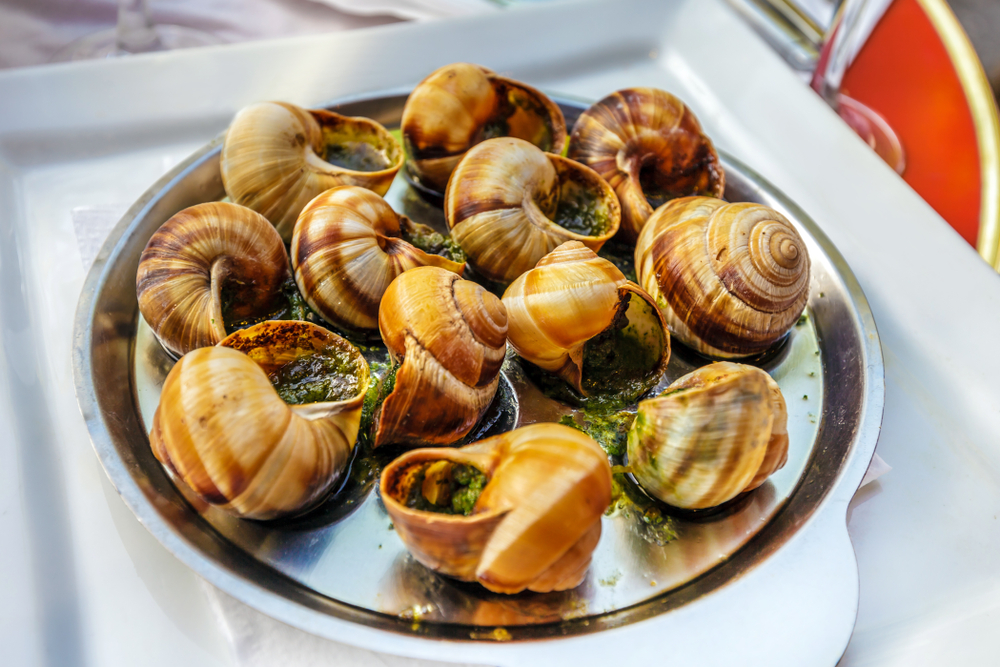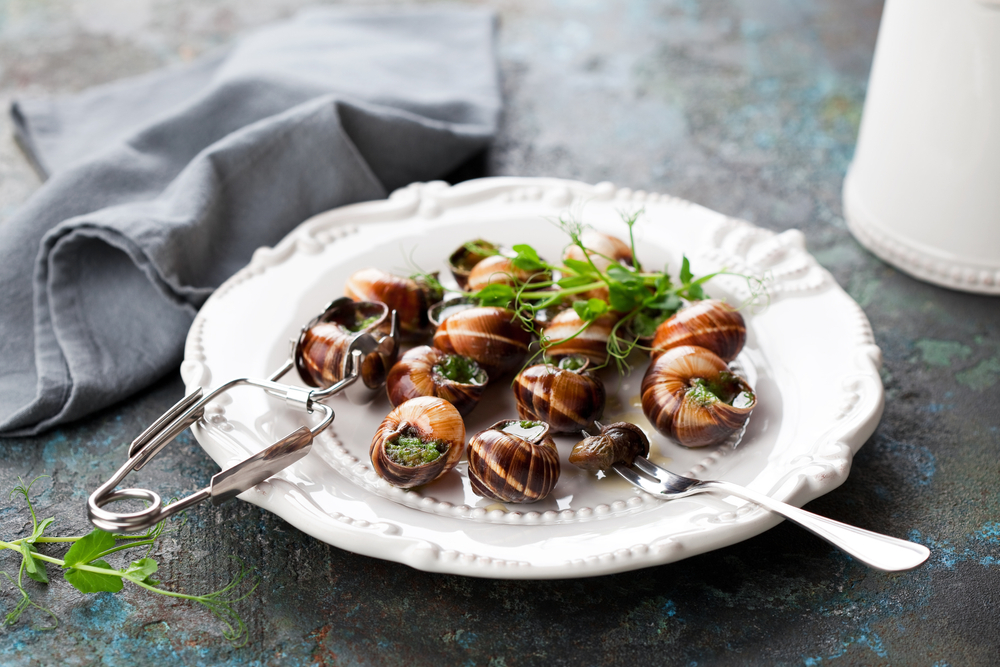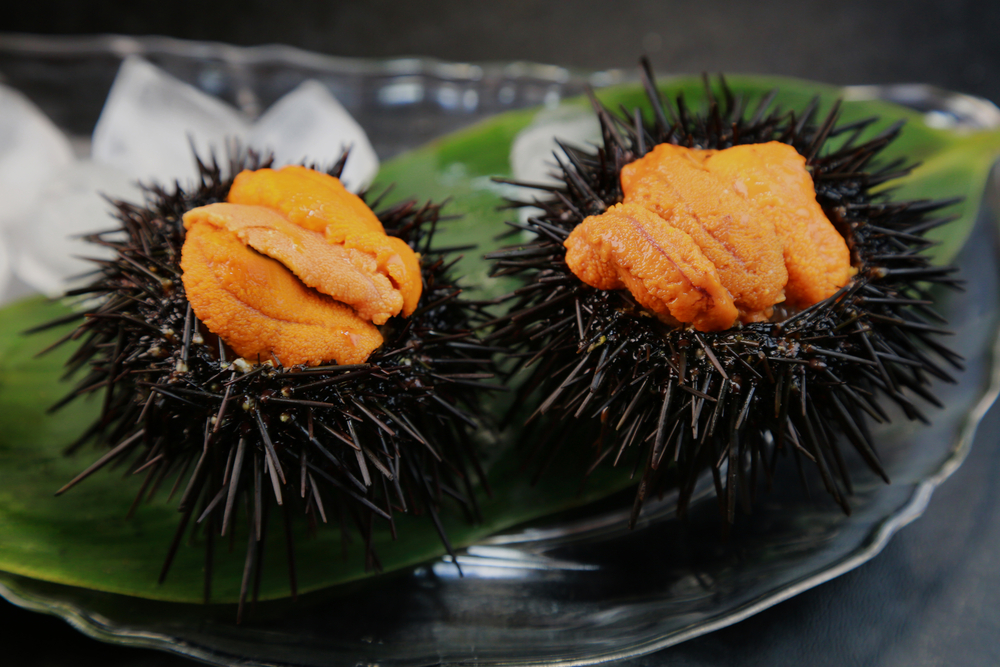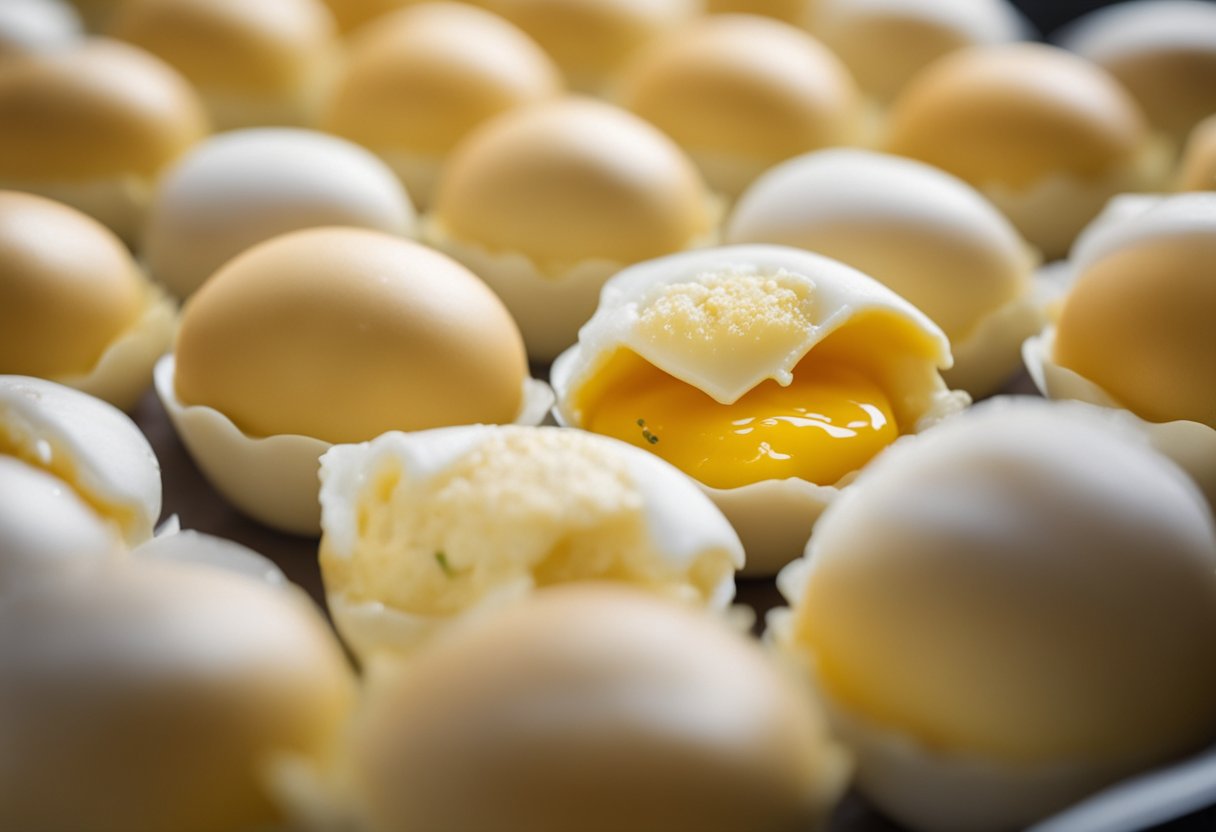You’ve likely heard stories about escargot as served on platters as a delicacy. Well prepared escargot certainly can be tasty for people who like to explore their palette and try small bites.
Escargot has a reputation for tasting slimy, though that is more attributed to people who have never tried it – and might even be put off by the thought of eating a sea snail.
Although one thinks of a snail, or escargot, as a slimy kind of food, a professional chef can make escargot take on its proper flavoring of a mix between chicken, fish, butter, and whichever sauce it was prepared with.

First, is escargot slimy?
One perception people get some escargot and snails before they get a chance to eat one is that they taste slimy.
Once prepared, escargot is not slimy. Any slime or excess moisture can come as the result of too much sauce – which is to say that the slime is not the snail – it’s the sauce.
So the trail of slime you see behind a snail sometimes is not likely to end up in your mouth, unless you eat it off the ground or from the water, which we don’t recommend.
What is the actual texture of snail?
People who are eating snails for the first time often try to take a fork or finger full and attempt to swallow it whole – assuming that it’s both gross and will slide down. A snail will actually slide down, but you won’t taste much.
When cooked, snails are actually fairly soft and well prepared snail can melt in your mouth.
The best comparison is to eating a mushroom. A mushroom is firm on the outside, but softer on the inside. Especially a cooked mushroom is very easy to chew and might have a rubbery texture.
What does escargot taste like?
While we gave a basic answer before, we can elaborate a bit. Escargot itself doesn’t have an especially strong taste. It’s also not often eaten without sauce.
Chefs most often have to add some flavor to escargot by adding wine, vinegar, garlic, butter, or anything else with a stronger taste. Garlic or butter can deepen the earthy flavors already present in escargot.

What you’ll taste more of is the sauce the snail was prepared in addition to the light, slightly rubbery texture.
Escargot eaters often compare escargot to a buttery mussel, which makes sense since they are similar animals.
How do you eat escargot?
Many people who have never eaten escargot and believe it is a food item served at a high class restaurant. They are afraid doing something that could be embarrassing. To be honest, we understand this – and eating escargot can be a little nerve wracking, but it’s easy.
First, escargot is usually served in the snail shell. It’s actually most often cooked within the shell.
Most restaurants (or home chefs) will serve escargot with a tair of tongs and a small fork. The tongs or clamp are more to keep a good grip on the shell while you reach in with the small fork. You can remove the escargot from inside the shell and eat it, often in one mouthful.
Is escargot good for you?
Health benefits wise, they are great for you. We do have to offer a little warning when preparing escargot:
Escargot wild diets often consist of decaying things ranging from dead plants, including feces from animals. Restaurants often have to be cautious because the things the snail eats are actually toxic to humans. Preparers of escargot are left with two choices: Get them while they are alive and let them starve so their stomachs are completely empty, or remove the intestines.
Chefs also tend to clean the shells themselves because they can be covered in the same toxic stuff.
After preparation though, the flesh of escargot is good for you and has lots of protein.
Escargot is also nearly fat free and has no carbohydrates, without the addition of sauces. Escargot sauces are also not often sugary or sweet.

You’ll get plenty of vitamins and minerals from escargot with a load of magnesium and phosphorus in a serving of snail.
They taste good – why is escargot expensive?
There are a few reasons why escargot tends to be expensive. First, as we detailed in their preparation process – making escargot in a way that tastes good and isn’t harmful isn’t as easy process. Making escargot, and making it tasty, is a time consuming process and not a matter of throwing a dish in the oven.
Snils are also expensive partially because the US Department of Agriculture has restrictions on their imports as snails are an invasive species. It’s not legal for restaurants to import live snails for escargot. Note what we mentioned earlier about snails eating plants – farmers don’t like that!
It’s possible to raise snails, though it’s also an expensive and time consuming process. The more common process is to have snails shipped in express containers with cooling.
Europe is less restrictive on escargot and snails with upwards of a half billion snails used for appetizers, salads, and many other delicacies.
Conclusion
Escargot is certainly a delicacy in it’s own right. While the perception that escargot is a slimy, rubbert, small piece of meat, the truest part of that statement is from the relatively small portion.
The taste of escargot is otherwise acquired from the sauce it was cooked in, and basic sauces from wine, garlic, or butter are preferred. You probably won’t want to just swallow a piece of escargot without chewing, as you’ll miss out on the pleasant texture and the sauce a skilled chef can make for them.
Be open minded when trying escargot. While it won’t fill you up, it can be fun to explore new flavors and cooking methods that make a snail taste really good.







